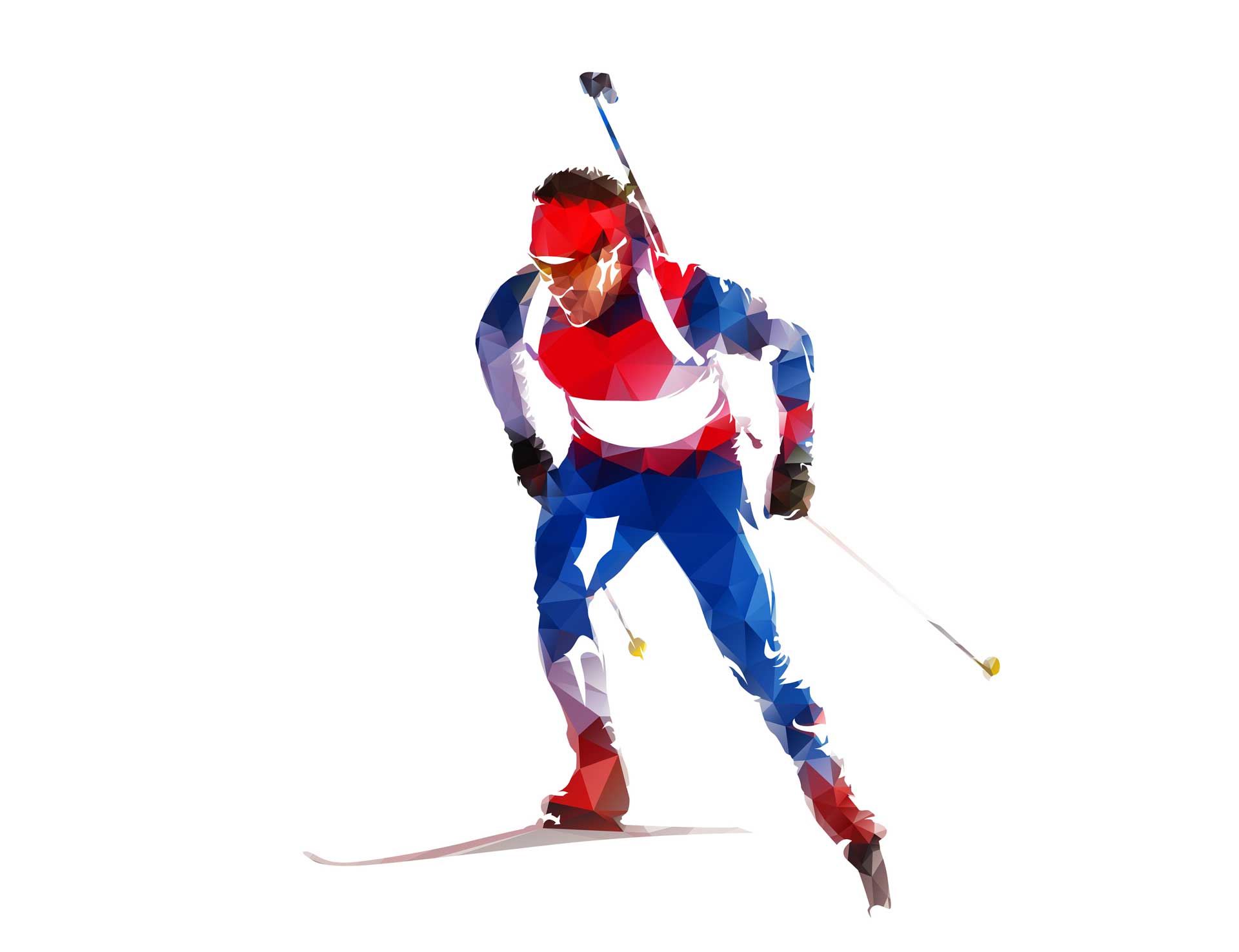Biathlon is a cross-country ski race with interludes of target-based rifle-shooting. Each round of shooting presents biathletes with five small targets, with penalties imposed for each target missed. These penalties come in the shape of usually either an extra 150 metres to ski or one minute added to the biathlete’s time – both of which can shake up a contestant’s position in the race and intensify the thrill of both the skiing and shooting sections of the race. An impressive performance in the shooting range can catapult a biathlete to first place in an instant, and it’s this volatility that makes the sport so engaging for competitors and onlookers alike.
- Historical Context
- Rules
- 2022 Winter Olympics Location
- What Separates The Best From The Rest?
- Who To Look Out For At The Olympics?
This February sees the start of the 2022 Winter Olympic Games in Beijing, with the first Biathlon event taking place on February 5th. There are five different events, each with their own gendered/mixed races: Individual, Sprint, Mass Start, Pursuit, and Relay.

Historical Context
With competitors skiing laps with rifles hoisted on their backs, an event as visually confusing as the Biathlon warrants an explanation of its origin. The first records of a cross between skiing and weaponry can be found in some late 19th century Norwegian military drills. In 1924, at the first Winter Olympic Games in Chamonix, the first resemblance of Biathlon emerged in the form of ‘Military Patrol’, a sport competed by teams of soldiers and athletes from competing nations. The interest for the sport was catalysed during the Second World War, as the Finnish military were able to inflict significant losses against the Russian forces, sparking other countries to promote their own winter warfare abilities.
Although the St. Moritz 1948 Winter Olympic Games saw an end to the Military Patrol, the sport returned twelve years later, improved and under a new name: Biathlon. Since the Squaw Valley 1960 Winter Olympic Games the sport has remained an exciting test of endurance, speed, and patience.
The Skiing
Depending on the type of race, competitors must ski three or five laps around a cross-country course designed for the Biathlon, often involving a variety of long inclines, sharp turns and challenging declines – it’s a lap, so for every slope descended there’s a hill to climb!
The distances each skier must travel varies depending on the event, from 6km per lap in the women’s relay to 20km in the men’s individual. Taking one of the more popular biathlon events as an example, the women’s sprint is 7.5km and the men’s sprint is 10km.
As far as style goes, competitors are not restricted to a certain type of skiing although skiers tend to opt for either a classical or freestyle skating technique. Biathletes must carry their rifles (which weigh around 4kg) on their backs whilst skiing, something that only adds to the intensity of the race.



